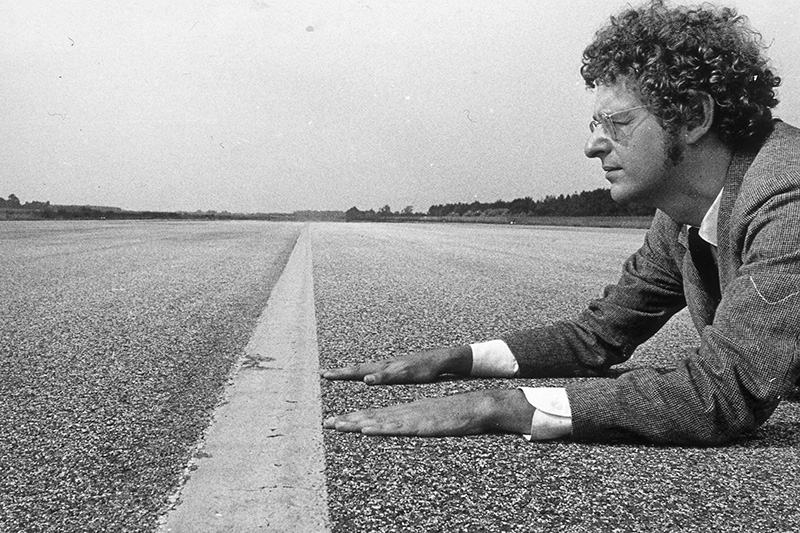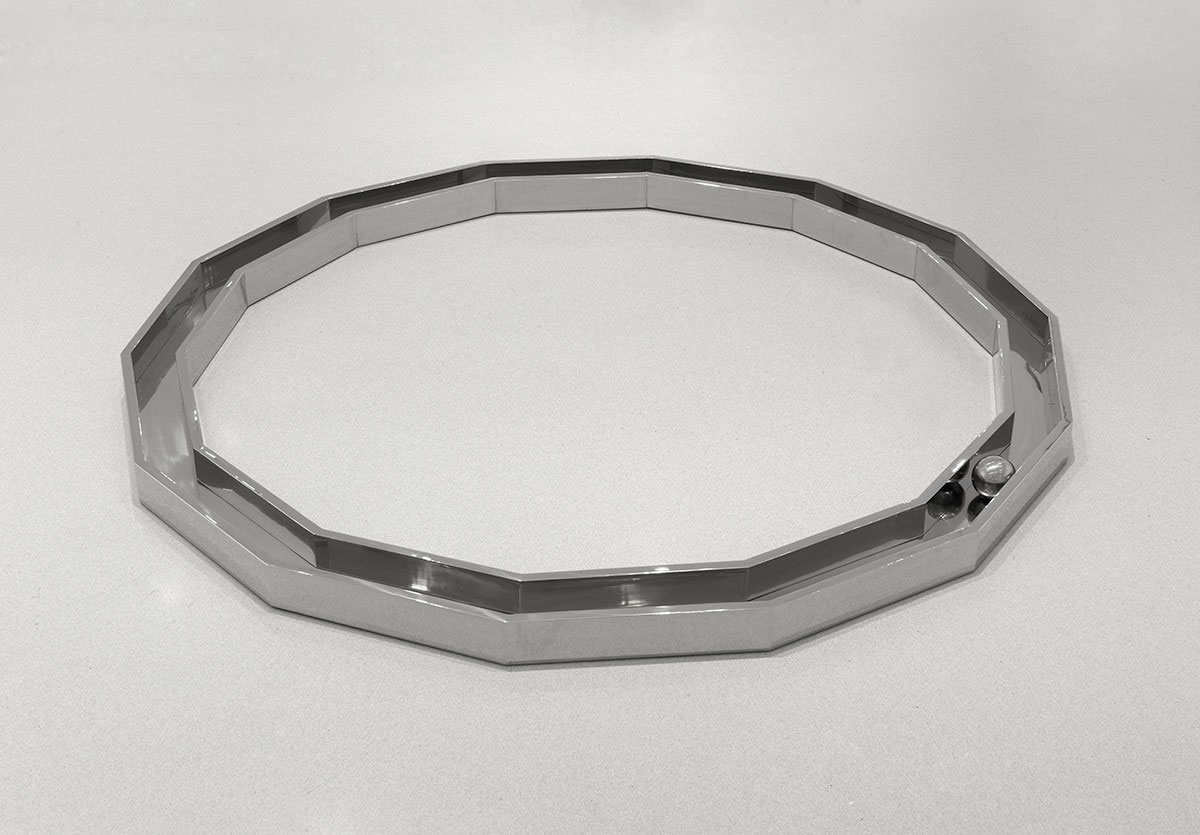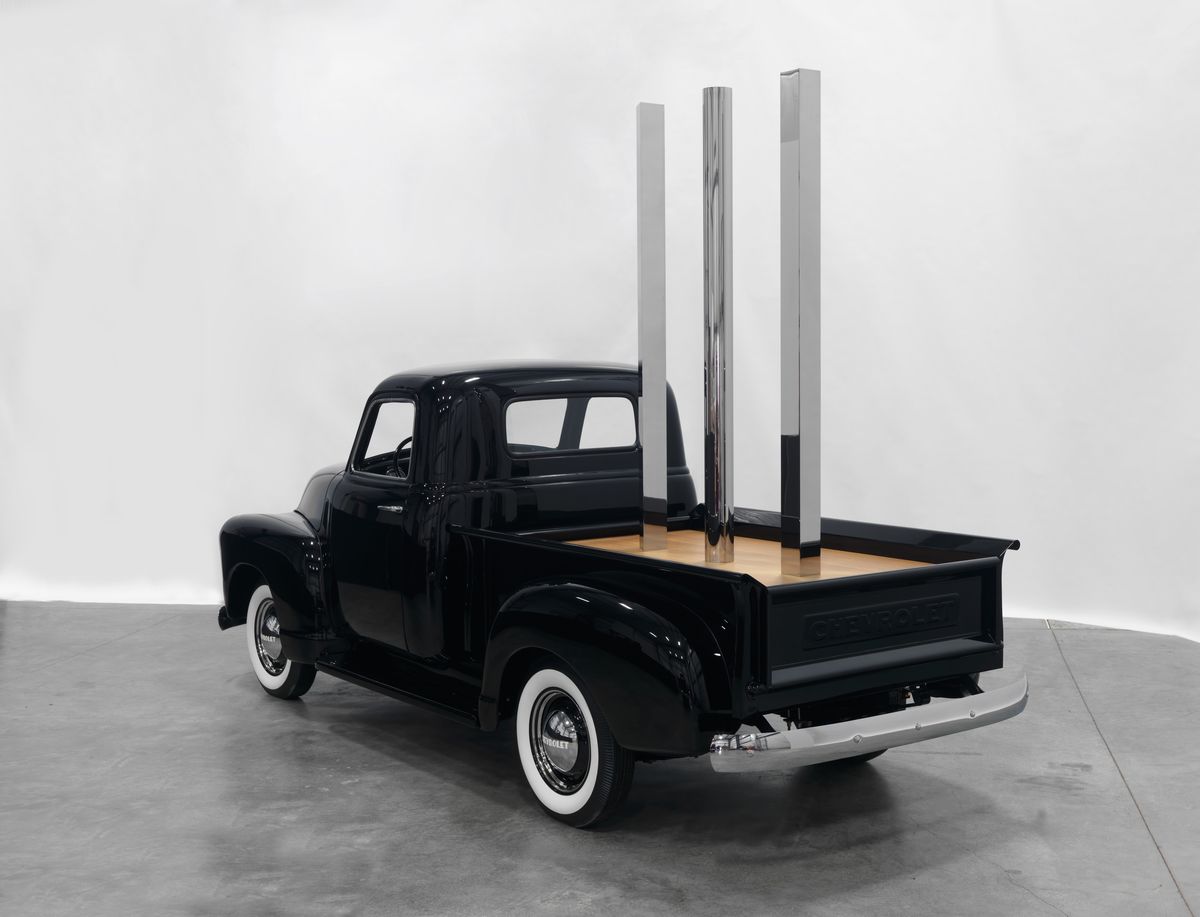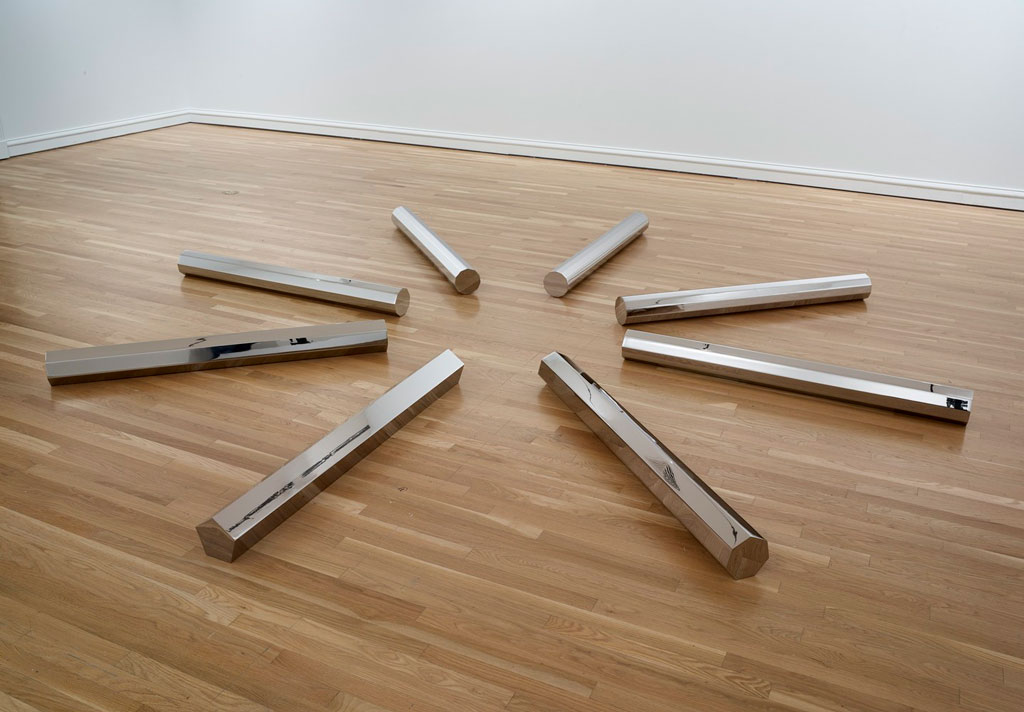TRACES: Walter de Maria
 Today is the occasion to bear in mind Walter de Maria (1/10/1935-25/7/2013). Perhaps most significantly, he developed a conceptual approach to earth-based works that both used the landscape as immersive “canvas” in what were exceptionally large-scale projects for his time, and also brought aspects of nature inside to force attention on the viewers’ relationship to it in insistent ways that transcended previous representations by other artists. This column is a tribute to artists, living or dead, who have left their mark in Contemporary Art. Through documents or interviews, starting with: moments and memories, we reveal out from the past-unknown sides of big personalities, who left their indelible traces in time and history…
Today is the occasion to bear in mind Walter de Maria (1/10/1935-25/7/2013). Perhaps most significantly, he developed a conceptual approach to earth-based works that both used the landscape as immersive “canvas” in what were exceptionally large-scale projects for his time, and also brought aspects of nature inside to force attention on the viewers’ relationship to it in insistent ways that transcended previous representations by other artists. This column is a tribute to artists, living or dead, who have left their mark in Contemporary Art. Through documents or interviews, starting with: moments and memories, we reveal out from the past-unknown sides of big personalities, who left their indelible traces in time and history…
By Dimitris Lempesis
 Walter de Maria was shy and focused on music as an early creative outlet. He attended college at the University of California at Berkeley where in 1957 he graduated with a BFA and in 1959 obtained his MFA. During his time at school he focused on history and then painting, while continuing to play jazz music. De Maria was involved in the Avant-Garde arts scene in the San Francisco Bay Area. He got involved in “Happenings” as well as musical and theatrical productions and began to explore three-dimensional art. His friendships with the composer La Monte Young and choreographer Simone Forti were key influences in this period, pointing him towards both Minimalism and interactive sculpture as genres of artistic pursuit, as well as a conceptual starting point for all forms of more material creative outcomes. In 1960 de Maria moved to New York City and delved into the downtown arts scene. There he continued to play a part in “happenings“, helping to operate a gallery space with Robert Whitman, as well as starting to create his own 3-D sculptural works from wood. He works that were inspired by Dada and imbued with both Minimalist and Conceptual tendencies. One piece, “Boxes for Meaningless Work” (1961) asked for viewers to “Transfer things from one box to the next box back and forth, back and forth, etc” while being advised to “Be aware that what you are doing is meaningless”. He composed two musical works “Cricket Music” (1964) and “Ocean Music” (1968. In 1965 he joined the band The Primitives, which became the foundation for The Velvet Underground. De Maria was also a part of an artist/musician collaborative group called The Druds, but avoided public recognition and celebrity. He rarely gave interviews and he tried not to be photographed. By the late ‘60s de Maria was beginning to become involved in the emerging Land Art Movement. He continued working within Minimalist and Conceptualist structures, and was recommended for the Dwan gallery by fellow Minimalist and Conceptualist artists like Sol LeWitt and Carl Andre, but he started to also engage with aspects of nature. He filled the Galeria Heiner Friedrich in Munich with dirt in 1968 and that same year made “Mile Long Drawing” in the Mojave Desert. His relationship with Heiner Friedrich was an important one. The German art dealer became the founding director of the Dia Art Foundation in the United States, which funded four of de Maria’s most important site-specific Earthwork installations in the 70s: “The Lightning Field”, “Vertical Earth Kilometer”, “Earth Room”, and “The Broken Kilometer”. In 1989 De Maria completed a sphere of polished granite for the Assemblée Nationale in Paris, followed in 2000 and 2004 by works for two museums on Naoshima Island in Japan. A comparable, 25-ton sculpture entitled “Large Red Sphere” (2002) was installed in the Türkentor, Munich, in 2010. “One Sun/34 Moons” (2002), conceived by the artist in collaboration with architect Steven Holl, was opened 2007 at the Nelson-Atkins Museum of Art.
Walter de Maria was shy and focused on music as an early creative outlet. He attended college at the University of California at Berkeley where in 1957 he graduated with a BFA and in 1959 obtained his MFA. During his time at school he focused on history and then painting, while continuing to play jazz music. De Maria was involved in the Avant-Garde arts scene in the San Francisco Bay Area. He got involved in “Happenings” as well as musical and theatrical productions and began to explore three-dimensional art. His friendships with the composer La Monte Young and choreographer Simone Forti were key influences in this period, pointing him towards both Minimalism and interactive sculpture as genres of artistic pursuit, as well as a conceptual starting point for all forms of more material creative outcomes. In 1960 de Maria moved to New York City and delved into the downtown arts scene. There he continued to play a part in “happenings“, helping to operate a gallery space with Robert Whitman, as well as starting to create his own 3-D sculptural works from wood. He works that were inspired by Dada and imbued with both Minimalist and Conceptual tendencies. One piece, “Boxes for Meaningless Work” (1961) asked for viewers to “Transfer things from one box to the next box back and forth, back and forth, etc” while being advised to “Be aware that what you are doing is meaningless”. He composed two musical works “Cricket Music” (1964) and “Ocean Music” (1968. In 1965 he joined the band The Primitives, which became the foundation for The Velvet Underground. De Maria was also a part of an artist/musician collaborative group called The Druds, but avoided public recognition and celebrity. He rarely gave interviews and he tried not to be photographed. By the late ‘60s de Maria was beginning to become involved in the emerging Land Art Movement. He continued working within Minimalist and Conceptualist structures, and was recommended for the Dwan gallery by fellow Minimalist and Conceptualist artists like Sol LeWitt and Carl Andre, but he started to also engage with aspects of nature. He filled the Galeria Heiner Friedrich in Munich with dirt in 1968 and that same year made “Mile Long Drawing” in the Mojave Desert. His relationship with Heiner Friedrich was an important one. The German art dealer became the founding director of the Dia Art Foundation in the United States, which funded four of de Maria’s most important site-specific Earthwork installations in the 70s: “The Lightning Field”, “Vertical Earth Kilometer”, “Earth Room”, and “The Broken Kilometer”. In 1989 De Maria completed a sphere of polished granite for the Assemblée Nationale in Paris, followed in 2000 and 2004 by works for two museums on Naoshima Island in Japan. A comparable, 25-ton sculpture entitled “Large Red Sphere” (2002) was installed in the Türkentor, Munich, in 2010. “One Sun/34 Moons” (2002), conceived by the artist in collaboration with architect Steven Holl, was opened 2007 at the Nelson-Atkins Museum of Art.

















